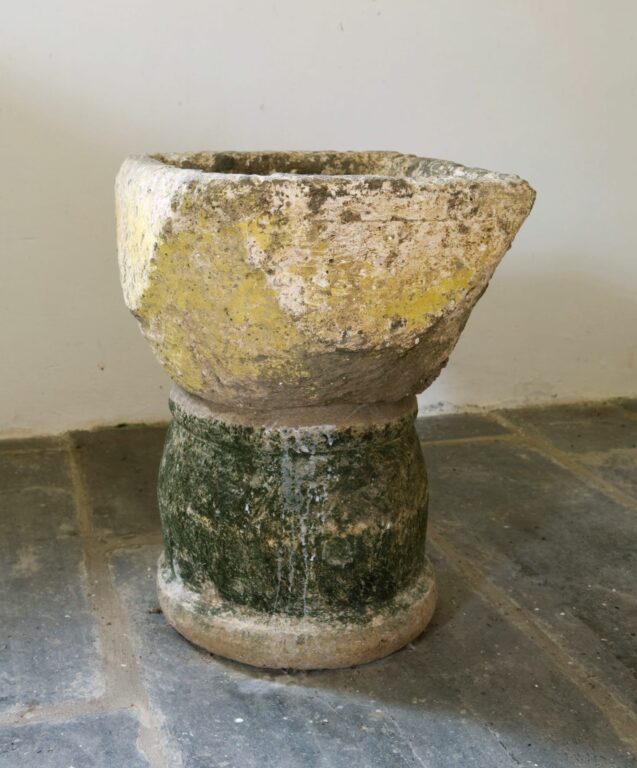
The painted and panelled pulpit is so tall that it almost touches the ceiling with its sounding board.
St Andrew’s is a modest and evocative Georgian time capsule, and also a bit of an enigma.
The church was first mentioned in documents of the 12th century, when it was granted to St Dogmael’s Abbey. It was rebuilt in the early 19th century. The architect may have been David Evans of Eglwyswrw, a local architect with an office in Cardigan, who built other churches locally including those at Cilgerran and Llechryd. But it’s largely undocumented, and nobody is quite sure when it was built or by whom.
From the outside, it is a simple stone box. The Gothick windows are the only hint of what may lie inside… Lifting the latch on the bead-and-butt west door, an interior “of delightful and luminous simplicity” is revealed.
A complete set of box pews lines the south wall. A crenelated vestry enclosure takes up the northwest corner. But the chief joy is the triple-decker painted and panelled pulpit, reading desk, and clerk’s desk — the former so tall it almost touches the ceiling with its sounding board. The woodwork is painted in a distinctive late Georgian scheme, which we have not re-painted or retouched – just gently washed.
In the southwest corner, you’ll spy the most ancient element – the font. Possibly a survival from an earlier church on this site, it’s a lopsided cushion-cut bowl on a thick, moulded shaft, rising to just under a metre in height. It’s believed to date from the late 12th century.
In 1828 the church was described as being in “tolerable repair” and “tolerably furnished with all things convenient for the country church”. This is frustratingly vague! Could this be before the Georgian restoration? Or after? We do know that, between 1813 and 1828 it was served by a non-resident minister, who was the vicar at several South Pembrokeshire churches, but who, in fact, lived at Emsworth, Hampshire!
When we came to its rescue, St Andrew’s was in a sorry state: Its fine Georgian windows rotten, the glass kicked in. Its walls damp. Its roof leaking. Its box pews streaked with bird and bat droppings. In 2022, a grant from Cadw’s maintanance and minor repairs fund enabled us to tackle a build-up of bird nest and feeding debris in the roof, which was causing the timber ceiling to sag and decay.


The churchyard is also a haven for wildflowers such as primroses, bluebells and cowslips, and ground nesting birds like the warbler or chiffchaff. The church is just 300m north of Trefael burial chamber.


The buttons below link to church or local information on other websites.